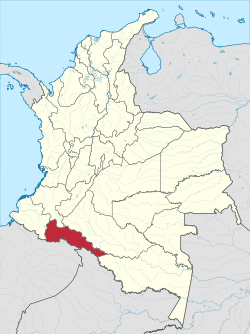Geospatial modelling in support to Energy Access in Putumayo Colombia
Addressing critical energy access challenges in Colombia's Putumayo region, this MSc thesis aims to leverage geospatial modeling to support sustainable electrification and clean cooking initiatives, with a particular focus on improving access for rural schools.
Background

The Putumayo Department, located in the southwestern region of Colombia, is characterized by its diverse landscapes, encompassing the Amazon rainforest, the Andean foothills, and the Pacific Plains. Covering an area of about 24,885 square kilometers, Putumayo is known for its rich biodiversity, indigenous communities, and unique ecosystems. This region is named after the Putumayo River, a significant tributary of the Amazon River, which plays a central role in its cultural and economic identity. However, despite its natural richness, Putumayo faces considerable challenges in socioeconomic development, including energy access issues and limited infrastructure.
Putumayo has a population of approximately 360,000 people, with about 40% residing in rural areas. The department is home to several indigenous groups, who have distinct cultural traditions and have historically depended on the land for their livelihoods. The population density is relatively low compared to other Colombian regions, and communities are dispersed over vast areas, making infrastructure development more challenging. Many residents rely on small-scale agriculture, forestry, and fishing as primary means of sustenance, though Putumayo is also known for oil extraction, which has had significant environmental and social implications.
Energy access in Putumayo is limited, particularly in rural and remote areas. Urban centers in the department, like Mocoa (the capital), Puerto Asís, and Orito, have more consistent access to electricity due to connection to the national grid. However, rural communities often experience unreliable or no access to electricity. The infrastructure in place is insufficient to meet the needs of dispersed populations, creating disparities in energy access that impact residents’ quality of life, economic opportunities, and access to essential services like healthcare and education. Power outages and low reliability are common, especially during the rainy season when heavy rains and landslides can damage infrastructure. Diesel generators are often used in areas off the grid, but these are costly and environmentally taxing, increasing the need for alternative, sustainable energy solutions.
Task description
This Master's thesis, undertaken by maximum two dedicated students, is designed to provide data driven support for energy access planning in the Putumayo department of Colombia, with a specific focus on energy access to schools. The students will employ specialized Geographic Information System (GIS) modeling tools, namely OnSSET for electrification strategy modeling and OnStove for clean cooking strategy modeling, developed at the Royal Institute of Technology (KTH).
The scope of the work will be decided with the students depending as well if the work will be carried by one or two students. The task may include:
-
OnSSET for Electrification Modeling : The thesis will utilize the OnSSET tool to map and analyze current electricity access and future strategies and assess the potential for 100% electrification
-
OnStove for Modern Cooking Access : OnStove will be employed to model and evaluate strategies aimed at increasing access to modern cooking technologies. This will involve identifying regions reliant on traditional biomass and proposing alternatives to reduce health risks and environmental impact.
-
Data Analysis and Policy Implications: Insights from OnSSET and OnStove will be synthesized to evaluate the socio-economic and environmental ramifications of various strategies. This analysis will form the basis for actionable policy recommendations.
If the work is of good quality and the student(s) are interested, the research project will be designed to be suitable for a peer-reviewed publication in a high-quality journal.
Deliverables
-
GIS Maps Using OnSSET and OnStove: Detailed maps that depict Putumayo’s energy infrastructure, pinpointing areas in dire need of electrification and modern cooking solutions.
-
Strategy Evaluation Report: A comprehensive report assessing the viability, sustainability, and impact of the proposed electrification and cooking strategies.
-
Policy Recommendations: Informed, data-driven recommendations for Putumayo energy policy with specific focus on schools.
Criteria for evaluation
Critical criteria in the complete work, method development and metric for the final assessment are:
-
Fulfilment of the ILOs for Master Thesis at KTH's ITM School;
-
The student's initiative and independence in developing the overall research design;
-
A critical discussion of the assumptions and results;
-
Consideration of the literature.
-
The ability to communicate the results of scientific work clearly and coherently.
Prerequisites
This project is a fit for students that are comfortable working with multidisciplinary subject. Basic previous knowledge on how to conduct a literature review is required. No previous knowledge of GIS or Python is needed but strong interest to learn is required.
Specialization track
Transformation of Energy System (TES)
Division/Department
Division of Energy Systems – Department of Energy Technology
Research areas:
Duration
5-6 months, start January 2025.
How to apply
Send an email expressing your interest in the topic to Camilo Ramirez (camilorg@kth.se)
